Regardless of such catastrophic situation it presents, the Coronavirus (Covid-19) pandemic, penetrates the development of local as well as global, creative industries and academic institutions, alarmingly.
Nevertheless, such new-normal is confronted upon creatively, interpreting as well as materializing significant artworks, to-be exhibit, in such creative approaches, harnessing the ability and capacity of human beings, to think outside of the box.
30th April 2021, marks the most awaited moment, for the premiere launch of ARUNGAN, an exhibition initiated by such creative project 'My Office My Studio' (M.O.M), organized by creative educators as well as practitioners, from the School of Art and Design, UiTM Melaka.
The abbreviation M.O.M, is fairly suggested, representing such inspiring creative project as ‘My Office My Studio’, where its main objective, is upon providing a flexible as well as maneuverable, creative platform for artist and designers, to exhibit creative artworks autonomously.
M.O.M creative project, injects and infects synergy, in moving creativity forward, inspiring academic staffs as well as students, fortunately from UiTM Melaka. Such ideas generates awareness inclining towards a whole new paradigm of creative-community, happening directly inside campus, especially at the heart of such creative-community offices.
ARUNGAN group exhibition, enlisted 3 key-professional artist and designer, representing various background, experience, and discipline respectively, such as Walid Muhammad Syafrein Effendi, Shaharin Sulaiman, and Fadly Mohamed Sharif. These creative makers represents facets of the creative industries, within dimensions such as Graphic Design, Typography, Illustration, Photography and New-Media.
ARUNGAN project, is metamorphosed towards re-visiting, and re-visioning, unravelling revelations as well as hitherto of the 'Malay World'. Thus, unfolding foundational significance, between the Kingdom-of-Melaka and Constitution-of-Malaysia, respectively.
Before we proceed further, let us define the concept of ARUNGAN. From the 'Himpunan Kata Melayu Lama', Malaysian official Institute of Language and Literature (Dewan Bahasa dan Pustaka), ARUNGAN can be reasonably describe as, 'A route’ or ‘Sea-lane', designated for seafaring navigation.
Furthermore, ARUNGAN has a significant meaning by the Buginese (Bugis), defining ARU or ARUNG, as denoting social aristocratic status, as well as the ruling royal descendants, of the Malay World.
Hence, ARUNGAN is reasonably acknowledge as symbolizing the ability of human beings to acquire direction, and the capability in making conscious decision, through unfolding trials and tribulations, presented upon the journey of life, we find ourselves.
The Malay and Buginese were well-known for their proclaimed seafaring experience and expertise, unraveled, even before Pre-Globalization and the Age-of-Exploration, as stated in the cannons of western history.
Dr Felice Noelle Rodriguez, a Philippine historian, in her writings 'Magellan's (Filipino?) Slave, The First Circumnavigator? (2021)', remarks a favourite slave of Ferdinand Magellan, emerging from the Malay World. Magellan was a Portuguese explorer, significant towards one of the earliest circumnavigation expedition around the world, apart from Christopher Columbus who discovered the continent of America, during the heydays of Pre-Globalization and the Age-of-Exploration, respectively.
Felice Noelle Rodriguez, remarks this favorite slave of Magellan, as anRyk or Enrique de Malacca, whereby upon his mastery-skill, expertise, and experience served as Magellan's interpreter as well as co-circumnavigator. Finally, Enrique de Malacca was freed upon Magellan's death, where he may well have become the first to complete his ex-masters exploration in circumnavigating around the earth.
Harun Aminurrashid, a history teacher in Singapore published extensively regarding Enrique de Malacca, producing novels such as 'Panglima Awang (1958)' or translated as Commander Awang, which was referring towards anRyk or Enrique de Malacca, where his efforts and contributions towards disseminating such explicit knowledge, granted him with the 'Certificate of Merit', from the 'Dictionary of International Biography', London, England in 1968.
The unfolding revolution of the Malay World civilization, did not started during the Age of Discovery, despite such competence and compelling mastery-skills, professed by Panglima Awang or Enrique de Malacca. However, such advance civilization as the Malay World, had already embraced agricultural revolution 10,000 years earlier than ancient Egypt.
Stephen Oppenheimer, the Geneticist Professor, world-recognized for his synthesis of DNA studies with Anthropological and Archeological evidence in tracking ancient migrations, upon his book 'Eden in the East: The Drowned Continent of Southeast Asia (1999)', remarked the Malay World as emerging from such an advance agricultural civilization continent, known as the 'Sundaland'. The Sundaland was connoted as the lost Atlantis, as equal in respect towards the lost continent of Plato's (Atlantis), as referred in his dialogues in 'The Republic (375BC)', more than 2,000 years ago.
Oppenheimer, remarked such advance Sundaland civilization, were drowned by series of several 'Super-floods', caused by the rise of sea levels about 8,000 years ago. He elaborated from his systematic findings, that the drowned Sundaland was a vast plain of about 6,000,000 square kilometers in size, bigger than India, or about two thirds of China, respectively as well as written by Ahmad Murad Merican, Professor of the International Institute of Islamic Thought and Civilization (IIUM).
Oppenheimer argued that the peoples of Sundaland first started agriculture, in using stones to grind wild grains, as early as 24,000 years ago, advancing 10,000 years earlier than ancient Egypt.
Some of the preliminary works of Oppenheimer, such as 'Eden in the East: The Drowned Continent of Southeast Asia (1999)', in arguing the emergence of Sundaland Civilization and Continent, dismissed previous orthodox theories proving the opposite, such as the 'Travel Wave Theory', by Austrian Professor Robert Von Heine-Geldern, which acclaimed the Polynesians, or such civilization of the Malay World, originating as rice farmers travelling from origins of Yunnan, presently apart of China.
Genealogically established as the prince and princess of such advanced civilization as 'Sundaland' or the Malay World. It is with utmost respect, unsurprising, that during the heyday of the 'Age of Exploration', and the emergence of 'Scientific Revolution', the Kingdom-of-Melaka was already an established globalize civilization, situated upon the strategic position at the Straits of Malacca, which demonstrated such globalization, in capitalizing domestic and international trades, productively within the Malay World.
It was upon this lucrative prospect, its flourishing prosperity from such Kingdom-of-Melaka, attracting global traders, as well as capitalizing the local and global markets, which brought the expedition of Alfonso de Albuquerque, the Portuguese commanding commander, in launching several assaults upon the Kingdom-of-Melaka
Upon several assault, and the final siege by the Portuguese in 1511, Melaka was not only dominant through the powers of its economical trade, nevertheless Melaka’s prevailing political as well as social hegemony dominated the Malay World. Indestructible in nature, even after the siege of Imperial-Powers such as Portuguese, Dutch, as well as British, from the west. Such hegemony metamorphosed the principle foundation, which served as, the unfolding Weltanschauung or Worldview, dictating the fundamental identity of the Malay World.
This principle foundation, which not only addresses such identical connection, between the Kingdom-of-Melaka and Constitution-of-Malaysia, lays within reserving as well as preserving Islam as the federal official religion, and Bahasa Melayu or Malay language as the federal official language.
The Constitution-of-Malaysia reserves Islam as the official religion in Article 3 (1), and Bahasa Melayu (Malay Language) as the official language in Article 152 (1), respectively as stated in the Federal Constitution:
Article 3 (1) of the Malaysian Constitution provides: "Islam is the religion of the Federation; but other religions can be practiced safely and peacefully in all parts of the Federation."
Article 152 (1) states that "the national language shall be the Malay language". No one in Malaysia disputes this is a principle accepted in the founding of Malaya and Malaysia. However, in Article 152 part (a) and (b), it notes that there is no prohibition or prevention from the teaching or learning of any other language.
The principle foundation of 'Islam' and the 'Malay Language', was the significant reason why the Portuguese missionaries sought in conquering the Kingdom-of-Melaka. After the final siege of 1511, historically, wrecking collateral damages of mosque and administration building from the Kingdom-of-Melaka, were utilized in creating the structural fortress of “Porta de Santiago”, or known today as ‘A Famosa’. The motives of the Portuguese missionaries were clearly evident, underlining their victorious concept of the ‘3G’, described as victory upon ‘Gold’, ‘Gospel’, and ‘Glory’.
The Portuguese managed to capitalize the economical prosperity of Melaka for almost a single century, however failed to marginalized the indestructible identity of the Malay World for several more centuries afterwards, which unfolds in the reservation and preservation, of 'Islam' and the 'Malay Language', politically as well as socially, inside the Federal Constitution of Malaysia.
Islam was the cornerstone which oriented the Kingdom-of-Melaka, towards historic as well as hegemonic success, within the Malay World.
Ironically, during the 'Scientific Revolution' of the west, the 'Copernican Revolution' progressed alarmingly, reorienting the method, procedures, and protocols of scientific discoveries. Before Nicolaus Copernicus championed the Copernican Revolution, Europeans of the west, understood the astronomical model of the universe as Geocentric, upon the theory of Ptolemy of Greek, describing the earth as the center of the universe, which fairly connotes the concept of 'Man as the Center of the Universe' as well as ‘Man as the Measure of all Things’, clearly represented in the painting 'Vitruvian Man (1490)', by the famous Renaissance artist, Leonardo Da Vinci.
However such Geocentric theory were disputed, in favor of a Heliocentric Theory by Copernicus, describing the sun as the center of the universe, surrounded by circulating planets including earth, within its respective orbit, unveiling sunlight and darkness. Such astronomical theory revolutionized the western civilization, advancing towards the Scientific Revolution.
After all, the value of Individualism, where man was seen as the measure of all things, were challenged dialectically by the Interdependence between man and his creator, within prevailing movements such as ‘Romanticism’, emerging apart from its respective predecessor, the Age-of-Enlightenment as well as the Scientific Revolution.
Nevertheless, such model as the Copernicus Heliocentric theory, were clearly stated in the Quran, almost a 1000 years before its establishment. Precisely, the Quran describes the planets as moving in orbits, surrounding the sun, unveiling night and daylight, where the sun is at the center of the Universe. As stated in Sura 21:33, and Sura 36:40, inside the Quran, respectively:
"(God is) the one Who created the night, the day, the sun and the moon. Each one is travelling in an orbit with its own motion" (Sura 21:33)
"It is not permitted to the Sun to catch up the Moon, nor can the Night outstrip the Day: Each (just) swims along in (its own) orbit (according to Law)" (Sura 36:40)
Such principle of 'Islam', as the cornerstone of the Kingdom-of-Melaka, not only carved Melaka's Golden-Age, however prevalently also established the Golden-Age of Arabic Science, of the Abbasid Caliphate, more than 700 years ago. Historian Professor Bernard Lewis, upon his significant book 'The Arabs in History (1950)', remarked:
"A revolution in the history of Islam, as important a turning point as the French and Russian revolutions in the history of the West"
Bernard Lewis remarked, instead of tribe and ethnicity, the Abbasids made religion and language, the defining characteristics of state identity. This allowed for relatively cosmopolitan society in which all Muslims could participate in cultural and political life, as elaborated by Hillel Ofek, in his writings of 'Why the Arabic World Turned Away from Science'.
The success upon the Arabic-Golden-Age of Abbasids, were as well as significant to the Malay-Golden-Age of Melaka, which reserves and preserves Islam as the official religion, and Bahasa Melayu as the official language. This unravels and unfolds the principle foundation which lived upon the Kingdom-of Melaka, and Constitution-of-Malaysia, victoriously up until today.
The former president of America, Barack Obama, in his June 4, 2009 speech in Cairo, praised the Muslims for their historical scientific and intellectual contributions to world civilization:
“It was Islam that carried the light of learning through so many centuries, paving the way for Europe's Renaissance and Enlightenment. It was innovation in Muslim communities that developed the order of algebra; our magnetic compass and tools of navigation; our mastery of pens and printing; our understanding of how disease spreads and how it can be healed"
Rhazes also known as Abu Bakr Muhammad Zakariyya Razi (Al-Razi), established writings of his medicine Encyclopedia, more than 600 years before Denis Diderot brought together leading authors in producing significant 'Encyclopedie' upon the Age-of-Enlightenment. Al-Razi was the first person in medical history to discover that fever is a defense mechanism, his encyclopedia Kitab Al-Hawi or in Greek Liber Continens, still exist as one of the marvels in the cannons of medical history globally.
As significant as 'Islam' were to the Kingdom-of-Melaka, 'Bahasa Melayu' (Malay Language) played a significant role as the Lingua-Franca, defined as a language that is adopted as a common language between speakers whose native languages are different, during the Globalization heyday of Melaka.
Bahasa Melayu enabled Panglima Awang (Commander Awang), or anRyk, or Enrique de Malacca, whereby upon his competency in seafaring navigation, served as Magellan's interpreter, in accomplishing Magellan's earliest expedition of circumnavigating the world, where such expedition were celebrated within the Age-of-Discovery, as stated in the historical cannons of the West.
Significantly, the question of 'Aesthetics' or beauty in the Malay World, fairly at times disputes the ontology of Idealism and Realism, in favoring what the Western World would coined as Occasionalism. Described as a philosophical theory about causation, which states that created substances cannot be efficient cause of events. Instead, all events are taken to be caused directly by God. Unsurprisingly, for once, the Copernican Revolution correlated towards the verses from the Holy Quran, which was the will of God (Allah), for the Muslim.
The Occationalist Islamic Philosopher labelled by the Western World, Algazel (Abu Hamid Al-Ghazali), upon one of his major writings 'The Incoherence of the Philosopher' (Tahafut al-falasifa)', remarked philosophy as incompatible with the Islamic teaching, as elaborated by Hillel Ofek in 'Why the Arabic World Turned Away from Science', upon recognizing nature as entirely subjected to God's will: "Nothing in nature", Algazel wrote, "Can act spontaneously and apart from God".
Looking at 'Islam' as the principle foundation of the Malay World, the process of Islamic art is viewed as a devotional act, sacred between the connection of such creation and its creator.
Syed Ahmad Jamal, Malaysian National Laureate, in his writings 'Rupa dan Jiwa (1992)', remarks that such philosophical embodiment of aesthetic intention dictates the manifestation level of the artist's creativity and mastery. furthermore, he argued, to the Muslim artists, the visual imageries are expression to the act of devotion for Allah, the Creator of the universe, for he is beautiful and who loves beauty.
Thus, the Islamic artist reveals the creator of the universe, realizing his finite-presence of beauty in such natural realm, revealing purpose, seeking the infinite-essence of beauty upon such spiritual realm, beyond the natural. Devoting oneself, one with his creator. Allah who is the creator of such beautiful Universe.
Dr Dzul Haimi Md. Zain, a former Islamic art professor, explained the '4 Stage Creative Model Process', in Islamic art, which were 'Imitation', 'Denaturalization', 'Stylization', as well as 'Abstraction', respectively. This process is upon the representation of the subject, content, and form of any Islamic Art.
However, Aesthetics apart from the Malay World, reasonably can be categorized into two, which is 'Aesthetic Objectivity', and 'Aesthetic Subjectivity'.
Aesthetic Objectivity is regarded as an individual preference or taste sensually as well as sensuously, for example I love orange juice, and you love apple juice, our personal preferences dictates our decision making in choosing between orange or apple juice. Nevertheless, 'Aesthetic Subjectivity' is regarded as a collective preference or common taste, sensually as well as sensuously, for example even though my preference is orange juice, and yours is apple juice, however we both still find it commonly satisfying, upon consuming fruit juices, on such a hot day, as of today.
In the western cannons of Enlightenment, such ideas as 'Transcendental Idealism' and Categorical Imperative' by Emmanuel Kant, upon his writings of 'Critique of Pure Reason (1781), provides the relative state of 'Aesthetic Objectivity'. Explaining ‘Categorical Imperative’, Kant argued that rational beings can never be treated merely as means to ends; they must always also be treated as ends themselves. It is upon human beings who interrogate or frame nature into phenomena, objectively. Such ideas acts as evidence and prove, in how the Western World valued Individualism as one of the most important aspects of an Artist's individual expression, upon the uniquely identical ideas, feelings, and emotions, dictating the Artist's style and character. Such situation is relative to the prose "Beauty Lies In The Eyes Of The Beholder", by Plato, the classical Greek philosopher, or commonly referred as “Beauty is in the Eyes of the Beholder”.
Nevertheless, such ideas as 'Zeitgeist', by G.W.F Hegel, upon his writings of 'Phenomenology of Spirits (1807)', provides the relative state of 'Aesthetic Subjectivity'. Hegel argued 'beauty' as an expression of the human desire for freedom, which sets standards for what is beautiful. In addressing aesthetics as a philosopher, Hegel viewed the freedom of spirit in the history of humankind, as an unfold series of dialectical opposition which resolves as the 'Zeitgeist', or the spirit of its time. Such ideas acts as evidence, in how the Classical Greek valued the Collectivism of Beauty-Ideals, within the aspects of symmetry, proportion, and harmony.
In fact the word 'Aesthetics', originated from the Greek 'Aisthetikos', fairly resembling the word, 'perceive' or 'perception'. Hence, nowadays we generally understand Aesthetics as 'Beauty', or philosophically on axiology theories, related to the study on the nature of value, and valuation in Art.
Particularly, 'Beauty-Ideals' of symmetry, proportion, and harmony first emerged in Ancient Greek. They considered these ideal aspects or properties of beauty, to be intrinsic as well as extrinsic to all beautiful things. Such representation value of beauty is fairly represented as a beautiful 'sound-mind', fairly symbolizing crowned beauty pageant contestant, such as 'Miss Universe', synonymous towards the connotations of 'Beauty with Brains'.
'Aphrodite' for the Greeks, were the goddess of love and beauty, the manifestation of her statue, serves as representation of physical perfection as well as symbolizing the female beauty. Aphrodite had her own celebration, called 'Aphrodisia' celebrated especially by the citizens of Athens, despite the prominent 'Olympics' festival celebration, upon honoring Zeus, as the father of the Greek gods and goddesses. Hence, the Greek valued Aesthetics, as a holistic and well-rounded approach, upon the nature of its valuation collectively, which is still presented up until today.
Despite such collective valuation of Aesthetic Subjectivity, there were also Greek School of thoughts, emphasizing such focus on Aesthetic Objectivity.
Aurora Winwood, in her writings 'The Cult of Beauty in Ancient Greece and Modern Media (2016), remarks the Pythagorean School of thought taking objective stance on the fundamental value of beauty, moreover focusing on the order and symmetry, as an indication of beauty. Such thinkers sought a strong connection between beauty and mathematics, in which Aurora argued nothing that the eyes was more attracted, to beauty as a form of order. Aurora further remarked Pythagoreans, held that while ugliness is the expression of disorder and a lack of rational proportions, beauty is considered an objective expression of cosmic truth.
However, Greek philosophers including Socrates, Plato, and Aristotle believed that proportion and harmony were essential to beauty in different ways. Such properties of symmetry, proportion, and harmony, is evident upon the celebrated Greek architectural columns, such as Doric, Ionic, and Corinthian, respectively. Nevertheless, Hippocrates, the Greek physician, often referred by the Western World as 'Father of Medicine', emphasis the importance of moderation (harmony) and balance in consuming medication as well as treatment.
As much as the Greek's sought for Aesthetic principles such as symmetry, proportion, as well as harmony, upon indicating such valuation of beauty. Nevertheless, the Malay's upon writings of Dr Zakaria Ali, who is a celebrated art historian professor, upon 'Thoughts on the aesthetics of Malay Artifacts (2006)', remarked several subjective Aesthetic principles shared as a common collective taste, indicating the valuation of beauty, from the Malay World Weltanschauung (Worldview), such as Berhalus (Finesse), Berguna (Useful), Bersatu (Unity), Berlawan (Contrast), as well as Berlambang (Symbolic).
There is no such specific recipes for Aesthetic beauty, however there are principles of Aesthetic beauty which could be universalize, under a particular Weltanschauung or Worldview, where such beauty is conform as the Zeitgeist, or the unfolding freedom of beauty, upon creating, developing, thus cultivating meanings of culture, in a given society or community we find ourselves.
Pamela Sue Anderson, in the writings of 'Encyclopedia of Religion (2005)', defines beauty as a 'property' of an object that produces an aesthetic pleasure, this pleasure is a subjective response to beautiful objects connoted as 'Beauty'. It is within such connection between beauty and pleasure which dictates the human desire to be beautiful and obtain beauty. However Ruth Lorand, in the 'New Dictionary of the History of Ideas: Beauty and Ugliness (2005)', remarks such attraction to beauty is universal and impacts choices and cultural developments.
Syed Ahmad Jamal, Malaysian National Laureate, in 'Rupa dan Jiwa (1992)', emphasized the concept of 'Form and Soul' in Malay Aesthetics. Reasonably describe as the finite physical form of an artwork which is limited to our sense, and the infinite metaphysical or spiritual form of an artwork which is beyond the limitation of our sense, penetrating towards the form of our souls, unconditioned as well as unconfined, by aspects such as time, space, and cause.
Respectively, German philosopher Emmanuel Kant, in his work 'Critique of Pure Reason (1781), remarks such aspects of 'timeless', 'spaceless', as well as 'causeless', upon describing the 'Noumena Realm', which Kant further argued in his work 'Critique of Judgment (1790)', where reasonably he addresses beauty as not on the object that we view, nevertheless beauty is upon the Transcendental Idealism, between the 'Noumena' (Realism) and 'Phenomena' (Idealism), where we framed beauty upon purpose and pleasure. This is where at the point of critical Aesthetic judgment, Kant further describe aspects, such as 'Purposive without Purpose', or the final with no end.
Hence, Emmanuel Kant, demonstrated in the 'Critique of Pure Reason (1781), 'Critique of Practical reason (1788)', and 'Critique of Judgment (1790)', that Aesthetics should be as objective, in regards toward aspects of its attributes or properties, as well as subjective, in regards towards aspects of its universality, where he proclaimed his idea of Transcendental Idealism, as significant in regards to matters of Aesthetics in art.
Interestingly, relative towards the concept of the 'Noumena Realm' by Emmanuel Kant, such approaches are fairly demonstrated upon the purpose of Islamic Art. Where beauty is not only in the eyes of its beholder, however beauty is more than what meets the eyes of the beholder, beyond the limitation of humankind's limited senses.
Islamic Art, nourishes the view which beauty is not in an object at sight, however distinguishingly, beauty is far beyond, in seeking such object at sight, as a beautiful creation, created by the almighty creator. This identical approach in creativity, dictates the process of art and design, upon a higher value, of not only instrumental or utilitarian in nature, nevertheless extra-utile, upon the purpose of devotional act, realizing as well as materializing spiritual forms of connection between the creation and creator.
In the social history of art, German art historian Arnold Hauser in his writings The Philosophy of Art History, remarks his leading principle which the behavior of individuals is the product both of their inborn capacities and of the situation in which they find themselves.
Thus, consequently the Aesthetics of the Malay World, especially Malaysia, clearly is identical towards the principle foundational Weltanschauung (Worldview), dictated since the hegemony of the Kingdom-of-Melaka, present up until the Constitution-of-Malaysia, as of today. Precisely underlined by the federal constitution, as well as the 'Malaysian National Cultural Policy (1971)', emphasizing the 3 principles:
1) The national culture must be based on the indigenous culture of this region (Malay Archipelago).
2) Suitable elements from the other culture may be accepted as part of the national culture.
3) Islam is an important component in the formulation of the national culture.
In a nutshell, the historic as well as hegemonic essence and presence of the Kingdom-of-Melaka, and the Constitution-of-Malaysia is reserved and preserved in this interesting ARUNGAN exhibition project. Metamorphosed towards re-visiting, and re-visioning, unravelling revelations, from the hitherto of the 'Malay World'. The respective creative makers represented clear success, upon interpreting and materializing significant artworks, underlining such interesting values in culture, tradition, as well as heritage, reserved and preserved from the Malay World.
'Keep on Charging!'
MUSADDIQ MOHAMAD KHALIL
Department of Liberal Studies
UiTM Alor Gajah
PACAQ- UITM RIG 2021
OPERATIONAL DEFINITION:
-Malay World-
The Malay Archipelago is the archipelago between mainland Indochina and Australia. It has also been called the "Malay world," "Nusantara," East Indies, Indo-Australian Archipelago, Spices Archipelago and other names over time.






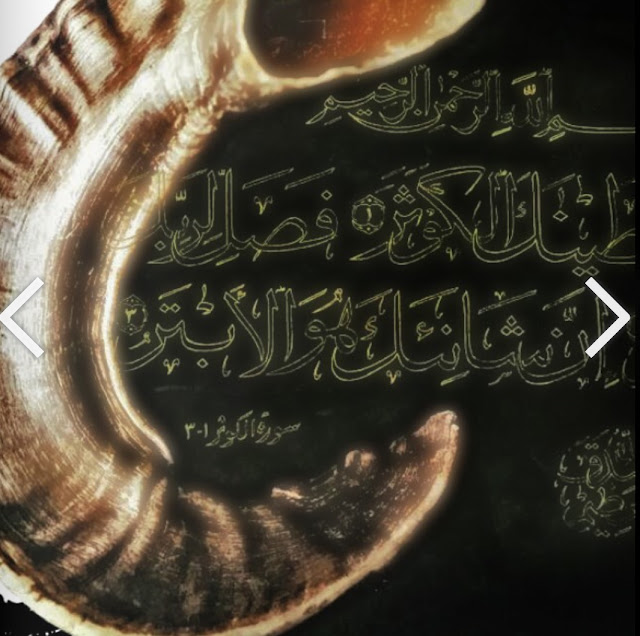




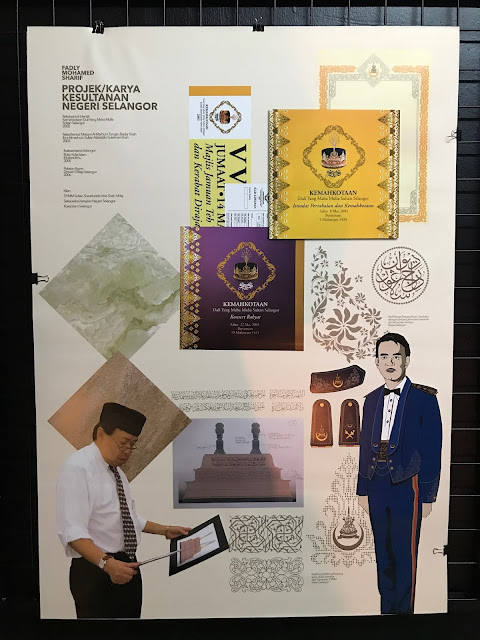


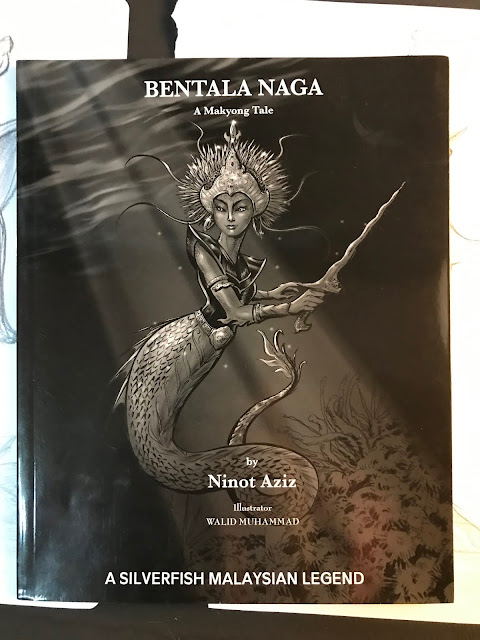
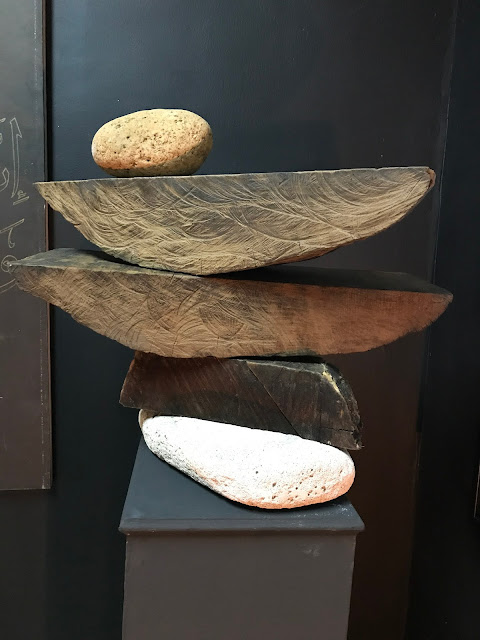
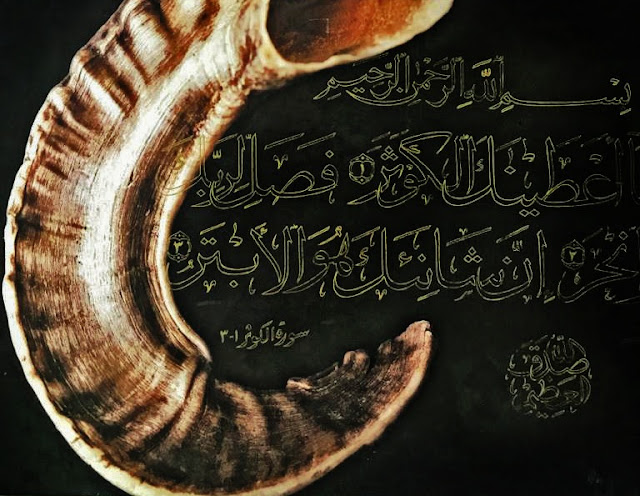
Comments
Post a Comment